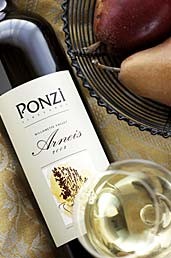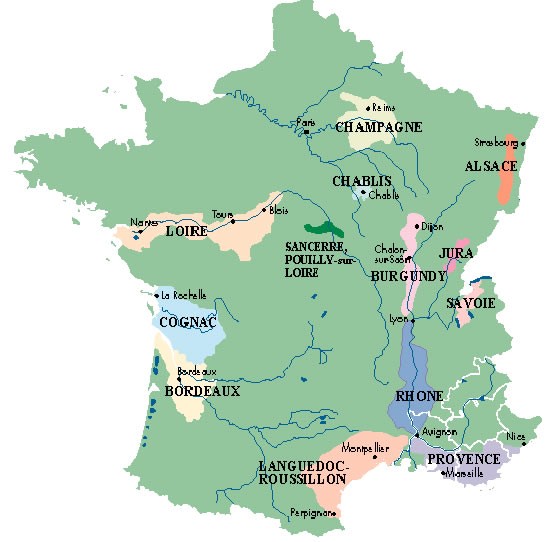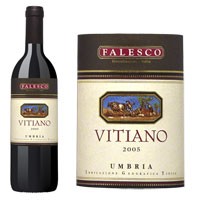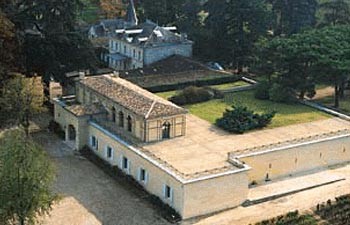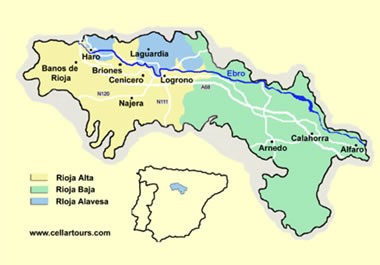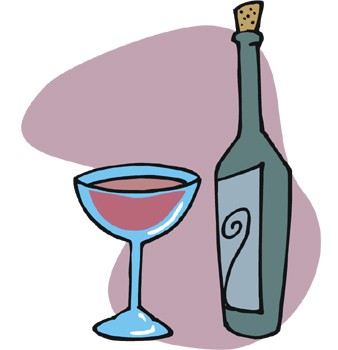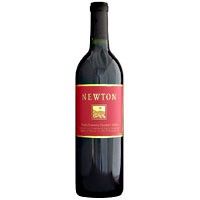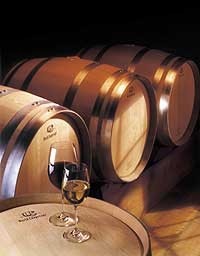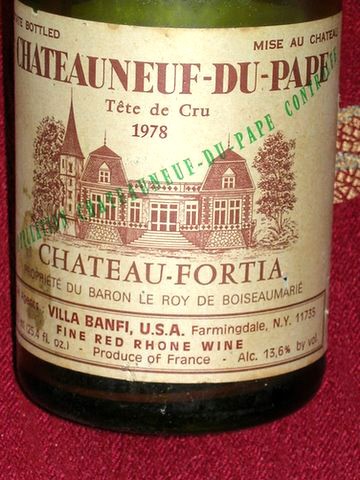
"In defense of my decision, it helps to know a little about the wine I chose over my children’s need for nutritional sustenance. " -- John Brown
One of the advantages of advancing age is that you can sometimes live long enough to see youthful acts of irresponsibility redeemed later in life (though probably never forgiven). Let me explain. In the early 1980’s, when I was just beginning my life-long affair with wine -- and when I had little or no disposable income -- I made a profligate, yet fateful, buying decision. That decision caused me great initial pain, but over the long haul, I feel, has turned out quite well.
The year was 1983 and I was on my way to buy the weekly groceries when I stopped by the local state liquor store to check out the wine selection. Back then, the State ABC store was the only place where you could purchase wine. As I casually browsed the aisles searching for any wine not bottled in big green jugs, I came across three bottles of 1978 Chateau Fortia. At that time, Fortia was considered the best producer of Chateauneuf Du Pape, and the ’78 had gotten great reviews.
Unfortunately, the wine cost $18 a bottle, a stratospheric price to pay for wine back then. I agonized over the decision for all of five minutes before using our weekly grocery money to buy the wine. When my wife asked why I had not gotten all the items on her grocery list, I sheepishly presented her with the three bottles of wine and, as I recall, some peanut butter, bread and lunch meat. To put it mildly, she was not happy, and I heard the words “selfish” and “irresponsible” used repeatedly to describe me over the next several months.
In defense of my decision, it helps to know a little about the wine I chose over my children’s need for nutritional sustenance. Chateau Fortia is a storied property and it’s late owner -- Baron Le Roy de Boiseumarie -- not only produced among the best Chateauneuf Du Pape, he developed a system of governmental regulations to insure the quality for everything associated with making wine. This system was the foundation for the Appellation Contrôlée system for all France. I had read about the exploits of Baron Le Roy and the legendary wines he was making so when I saw the opportunity to acquire a few bottles of this monumental wine…well you know the rest.
Now, fast-forward 25 years. (Incidentally, despite even more egregious acts by yours truly over that quarter century, I am still married to the same long-suffering wife). Anyway, this year on Valentine’s Day my wife asked me to go to our cellar and surprise her with a nice bottle of wine to accompany a special meal she had prepared. You can probably guess what I selected. Suffice it to say, I did surprise her - with 1978 Chateau Fortia. But the biggest surprise was magnificence of the wine itself!
As I decanted it, the wine’s orange-brown color did not bode well for its drinkability. There was also about one inch of sediment in the bottom of the bottle (which I expected) and when I put my nose to the carafe, there was very little aroma.
At least it didn't have any off odors, I thought to myself.
I set the wine aside for about one hour while dinner was being completed and then, as we sat down to eat, I poured it into our glasses. It had been transformed. As I sniffed and then sipped, the wine had morphed into an aromatic, complex and delicious elixir. Aromas of mint and leather were followed by layered flavors of cherries, caramel and white pepper. What a spectacular wine and one which, surprisingly, held up well to the fillet of beef it accompanied.
After we leisurely consumed the bottle, I went online to Robert Parker’s website (eRobertparker.com) and this is what that esteemed critic had to say about the wine (he rated it 95 out of 100) when he last reviewed it in 2000: “This has always been my reference point for Chateau Fortia (until I tasted the 1970). It remains a prodigious, full-bodied, spectacular Chateauneuf du Pape possessing a deep ruby/purple color with only a hint of amber at the edge. A stunning nose of blackberries, pepper, smoke, dried herbs, and licorice is followed by a full-bodied wine with a seamless personality, a multi-layered texture, and a fabulous wealth of fruit. While fully mature, it is capable of 5-7 additional years of life.”
Well, here it is eight years later and still holding, though for how much longer I cannot predict.
So, did my wife forgive me for that act of profligacy 25 years ago? She’s not willing to go that far, but I may be able to get closer to redemption since I have two more bottles of the 1978 Chateau Fortia lying in repose in the cellar.

